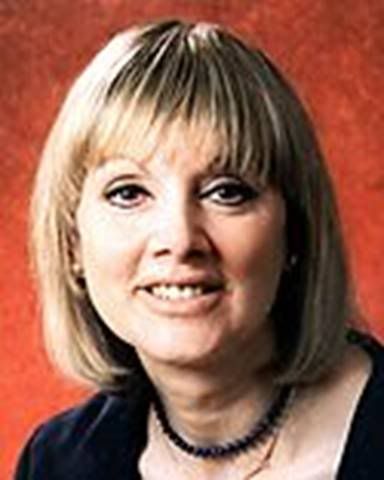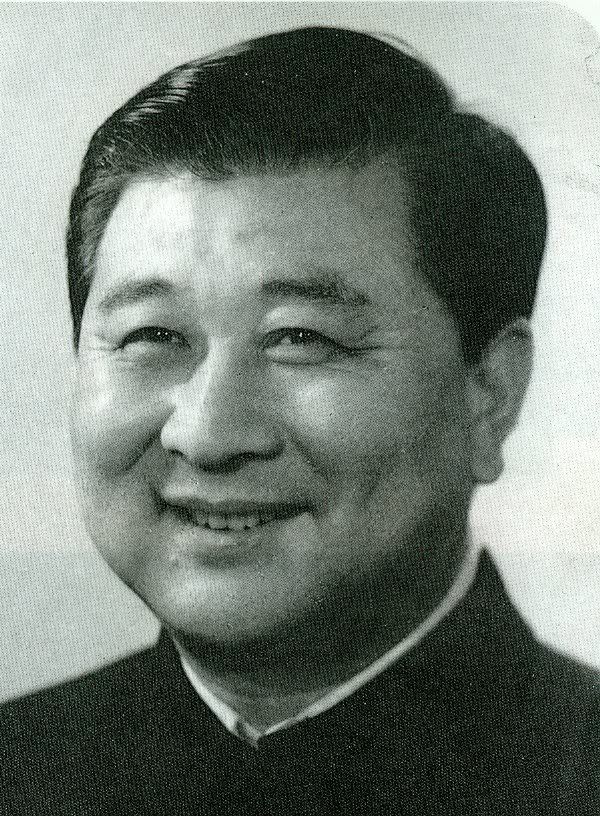转帖:比三鹿奶粉厉害100倍的大闸蟹
转帖于:顾记客栈
Yale Professor Chan CM, in his lecture at Beida Univ about poisonous eels being sold in China and how widely the local eel farms are using hormones which remain in the human body sometimes for 7-8 yrs.
Prof Chan went on to say that an Environmental Scientist whom he met at Suzhow meeting told him "my relative who owns a bean sprouts farm said that because of the use of hormones, the sprouts normally take 5 days to be ready for sale is now ready in 1 day. Truckloads are sold to Canton and no one in his village will eat the stuff they farmed. "
據媒體報導,耶魯大學經濟學教授陳志武去年在北大演講時,談到毒黃鱔問題 。
他說,當年七月,他到蘇州參加會議用餐時,一位科學院環境研究所知名學者對他說:“你們知道如今的黃鱔為什麼長得這麼快嗎?就是因為飼養者用了激素,人吃了黃鱔,這些激素在人體內七、八年還要發揮作用。”陳志武說,聽到這話之後,嚇得那些與會學者們沒人再敢吃黃鱔了。
陳志武還說,“ 我有一個親戚是賣豆芽的,他對我說:這些豆芽不能吃,用了激素,本來要五天才能長大的豆芽只要一天就長好了。本村人知道這些,都不去買這種豆芽,都是賣給廣州,一卡車一卡車,一夜之間就到了廣州的菜市場。”
Hairy Crabs : Mostly from Jiangsu .. Each year, the crabs became more affordable due to large harvest. They are bred using all kinds of toxins : hormones, antibiotics. From the baby crabs stage, the crabs are fed around 10 types of chemicals. In Fujian , they are worse, they will feed the female crabs with birthcontrol hormones so that the mother crab will be plumb and ready.
不僅黃鱔、豆芽,還有廣東、香港人最愛吃的大閘蟹,也是用激素餵養的。江蘇是中國盛產大閘蟹之地,有600多個蟹場。
香港廣東的大閘蟹,多是從江蘇運來的。香港《壹週刊》去年十月報導說,“香港人喜歡吃大閘蟹,蟹價越來越便宜,幾乎成為市民家常便菜。大閘蟹賣得愈便宜,市民吃得愈凶。”大閘蟹怎麼越賣越便宜,是大豐收嗎?
該刊記者專程到江蘇蟹場採訪,結果發現,那些大閘蟹都是用激素快速養成的。湖裏的大閘蟹一般至少兩年才能長到二兩以上,但江蘇養殖場的大閘蟹,使用激素之 後,都是一年蟹,當年下苗,當年養成上市。《壹週刊》的記者把從江蘇蟹場買回來的螃蟹送到香港“標準及檢定中心”化驗發現,蟹肉裏不僅有激素,還有多種對 人體有害的抗菌素。
江蘇使用“高科技”養蟹聞名的“大發水產養殖場”徐場長對香港記者說,“ 從蟹苗到上市,至少要十種藥,例如:氯黴素、土黴素、乙醇、痢特靈、諾氟沙星、恩諾沙星、病毒靈、多西黴素、己烯雌酚等等。”他還謙虛地說,他們比較守本 份,福建人更毒,在蟹產卵時喂避孕藥,這樣母蟹不會變瘦,蟹苗更容易長大。說著,這位蟹場負責人撈出兩隻大蟹對記者說:“你看看,多凶,不吃藥哪有這麼 凶!”當記者問這麼做不是害人嗎?這位場長直率地說,“現在的魚類、家禽類, 哪一樣不是藥物長大的!”你不這樣做,別人做,你還能做生意嗎?
24 hours after they are fetched, the crabs arrive HK dinner table, but not before they were fed one last time with antibiotics so that they will stay healthy enroute.
If you walk along the small streets in the Crab Farms, you will see many shops selling "Medicine for Crabs"; there are at least 10 different kinds on their "menu".
香港記者在江蘇蟹場看到,“工人將藥物攙入飼料,站在船上撒飼料,有如天女散花。”江蘇的大閘蟹,多數外銷香港、廣東,而且使用飛機運,當晚撈蟹,次日上 午就運到香港、深圳,下午就上市,晚上香港人就吃到嘴了。那位徐場長透露,為了防止運輸途中大閘蟹死亡,他們在捕蟹前再喂一次抗菌素。而24小時後,那些 抗菌素就經蟹肉到了港人肚子裏。香港記者說,在“大發養殖場”附近路上,隨處可見“蟹藥店”。他們進去一家,賣藥人一下子拿出十多包不同種類的藥物,並告 訴記者用法:土黴素每百斤飼料攙 500顆、痢特靈每百斤飼料攙8兩、乙醇每百斤飼料攙9兩……
Next Magazine Investigative Journalists took 12 Hairy Crabs for lab test. 11 of them have 土黴素. 6 have 氯黴素 All damaging to blood, and esp bad for pregnant women and foetuses.
《壹週刊》記者把從港九、新界、深圳、江蘇四個地方買回的12只大閘蟹,送去化驗,結果發現11個樣本有土黴素,6個樣本有氯黴素。土黴素屬“過時”抗菌 素,因副作用太多,很少使用;而氯黴素屬香港違禁物質,因會壓抑骨髓功能,影響人體產生血球和血小板,導致貧血、抵抗力下降和凝血困難問題。孕婦吃了含有 土黴素的毒蟹,胎兒的骨質會變灰、變脆。
香港記者在江蘇瞭解到,蟹場附近的女性,很多因吃了帶毒的大閘蟹而有流產症。在“大發蟹場”附近住的周紅梅說,“我生在水邊,吃水產長大,懷上三個孩子都流產了。後來醫生禁止我吃螃蟹,說裏面的藥物會對我不利,我照做了,才有了這個小寶寶。”
If they tell you their crabs are fed by organically (versus Chemically Fed), that means they are fed by decomposing carcases of dead cats, dogs, chicken. The dogs died from first being poisoned, or from diseases. The owner of the crab farm pulled from under a bed a dead carcass, deskin and dehaired it, waving a piece of the leg proudly pronouncing it as "organic feed" These dogs came from a private vendor that kills the dogs by poisonous gases. The dog died from chemical poisoning.
The investigative journalists from HK witnessed such display of "organic feeding" when the farmer tossed the dog carcass into the pond. They watched 2 crabs feeding on the decaying carcass.
除了使用激素、抗菌素,江蘇的蟹場還使用死貓、死狗、死家禽等餵養大閘蟹。江蘇“新群蟹場” 被稱為“李叔”的負責人的床下就放著兩隻未剝皮的死狗,還有一堆死雞鴨。他說,“一星期放一次,蟹特別喜歡吃爛肉!”香港記者看到蟹塘中浮著一隻剝了皮的 死狗,兩隻大閘蟹爬在狗上進食。水面的狗血紅中帶紫,狗頭呲牙咧嘴,樣子很恐怖。但那位“李叔”卻很輕鬆地從他的床下拖出一隻死狗,剝去皮毛,拎著狗腿對 記者得意地說:“這是天然飼料,我的蟹營養豐富,從小吃肉,不像別人的蟹從小吃藥!”但這些狗都是走私團夥將路上的狗用劇毒氰化鉀毒死後,拿來出售的,本 身就是毒狗。
The Fishery Dept of the govt showed that the most famous YC Lake for Hairy Crabs, at maximum can only produce 13,000 Class 1 Crabs. HK imported 130K crabs all claiming it's from YC Lake.
養蟹的人說,現在大閘蟹飼料有兩種:素和葷。吃素就是喂激素,以及土黴素、氯黴素,金黴素等抗菌素;吃葷就是往蟹塘裏扔死狗、死豬、死雞、死老鼠、死魚、 死蝦,這叫 “天然飼料”。江蘇陽澄湖出產的大閘蟹最出名,但據水產部門統計,陽澄湖的一級大閘蟹,每年只產一萬三千隻。但去年香港人吃了一千三百萬隻螃蟹(平均每人 吃兩隻),可見大部份都是冒牌貨。江蘇淡水研究所工程師唐天德說,現在全中國除西藏外,都說出售正宗陽澄湖大閘蟹,但八成以上是雜種蟹;是毒蟹。
JiangSu natural water engineer Mr Tong, TK said the the whole of China claims that the hairy crabs they sell are from YC Lake. The only exception being those sold in Tibet , a desert :-P
Turtles, Snakes, all fed by chemicals, as well as birth control hormones.
廣東人、香港人還喜歡吃 烏龜,認為大補。但養殖戶用避孕藥替烏龜增肥,本來五、六年才長大的烏龜,現在一兩年就能上市。香港人和廣東人還喜歡吃蛇,但據深圳《晶報》報導,蛇場為了使蛇在短期內份量加重,也喂避孕藥。深圳、香港市面出售的蛇,體形肥肥大大的都是食藥蛇。
據廣州《南方週末》報導,中國每年生產700 噸諾酮類(一種抗菌素),但其中有一半被蟹場、蛇場、烏龜場、黃鱔場等養殖業用掉;再加上其他種類的抗菌素,不知總數有多少噸,最後全部轉到了香港人、廣 東人,以至各地中國人的肚子裏,不知慢性殺死了多少國人。誰知道這薩斯病是不是這些毒藥經毒動物再轉化到人體後產生的呢?專家們不是說這種病毒以前只在動 物體內產生過嗎。
Toxin fed Crabs, snakes, eels, turtles, all fed for revenue, not forgetting fake milk powder, Fish from fish farms, bean sprouts, fake soya sauce, fake seaweeds, fake eggs ........ Color-enriched tomatoes, melon seeds, grapes...... all massive exploits to milk cash. Why is all that happening in China ?
First: Lack of govt control. To be fair, even if the govt wish to do it, they cannot keep up with the sudden market demand as consumers as the surging middle class have a lot more cash nowadays.
2nd : Greed.
3rd and most fundamental reason : This has led to the current problem of the maximization of profit at the cost of morality.
4th: The lack of Family Values (as kids growing up, the only family value bred them is how to make money). The daily mantra is "Study hard to ultimately get rich."
The adults feel that they have to make up for "lost" time when they were deprived under the Totalitarian regime when the govt kept what they harvested. While their bank accounts swell, they are morally bankrupt.
這些毒螃蟹、毒蛇、毒黃鱔、毒烏龜等,只是當今中國摻毒食品的巨大冰山一角。在中國人突然有了發財致富的機會、卻又處於一個無法無天的 道德真空 (既無宗教信仰,傳統倫理也全部淪喪)狀態下,那種不顧一切賺錢的欲念,可以誘發出人性中最冷漠、最惡毒、最瘋狂的部份。像往番茄、葡萄等水果上撒藥、塗 色以增加鮮亮等,都根本不足一提了。在這種情況下,中國的食品檢驗制度又遠遠不完善,同時人為的漏洞比大閘蟹還多。例如香港記者曾在江蘇蟹場問那位徐場 長,“國家有沒有禁止或者化驗標準?”徐場長毫不忌諱地說,“笑話,你不瞭解國情吧!放藥多少上市測試也沒個准,他高興就放行,不高興,再乾淨也沒用!”
Source












































